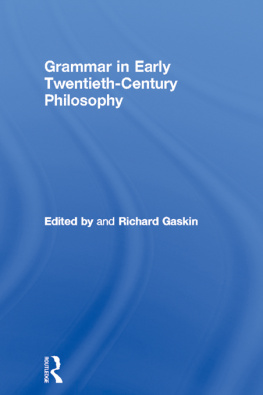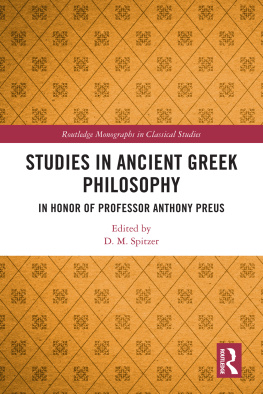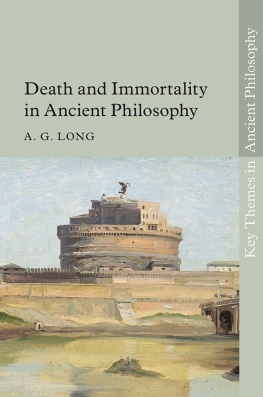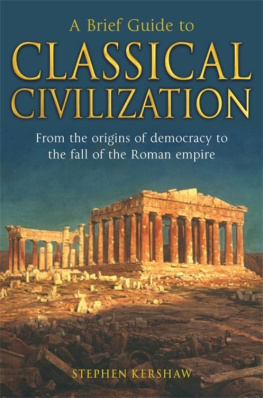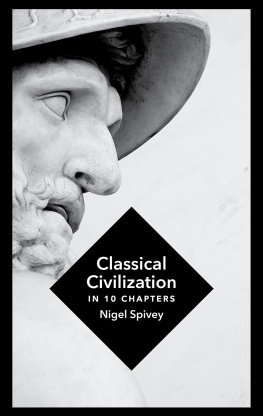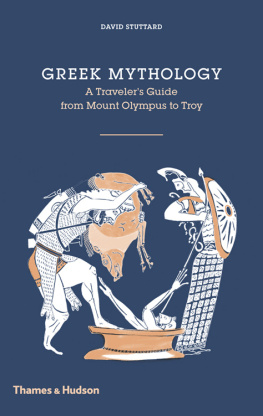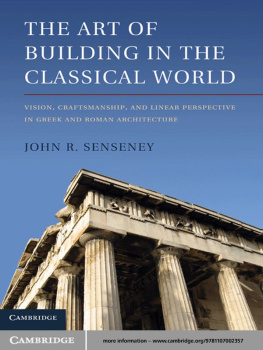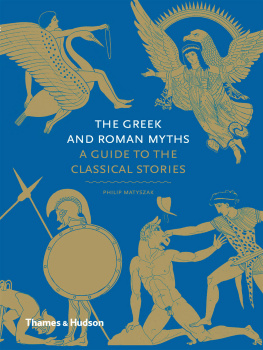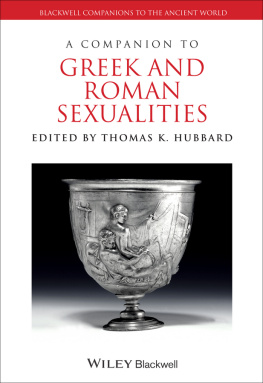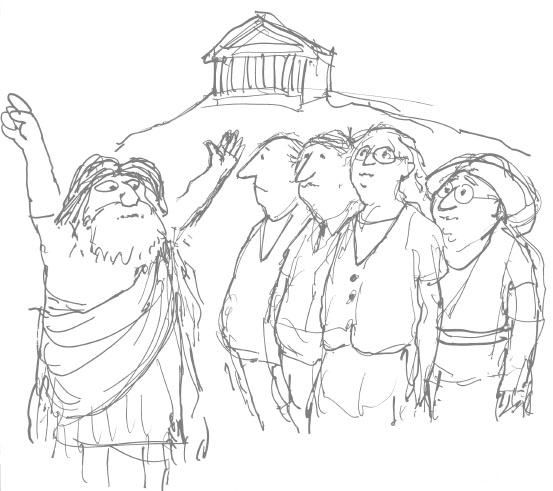
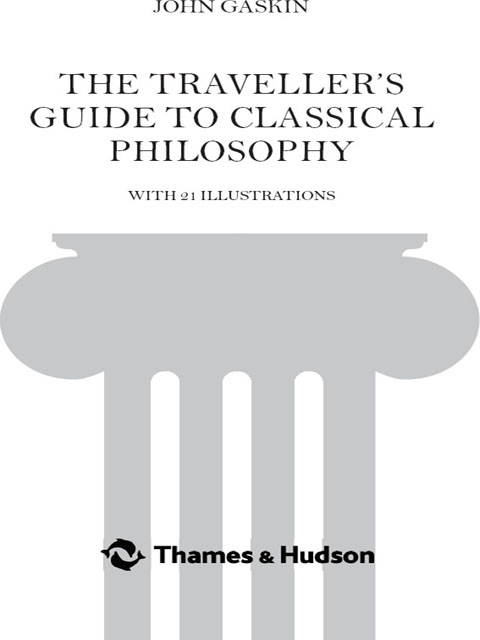
First published in the United Kingdom in 2011 by Thames & Hudson Ltd, 181 A High Holborn, London WC1V 7QX
Copyright 2011 John Gaskin
Pen drawings by John Kaine
Diagrams and maps produced by ML Design
First published in 2011 in the United States of America by Thames & Hudson Inc., 500 Fifth Avenue, New York, New York 10110
To find out about all our publications, please visit
www.thamesandhudson.com
www.thamesandhudsonusa.com
There you can subscribe to our e-newsletter, browse or download our current catalogues, and buy any titles that are in print.
All Rights Reserved. No part of this publication may be reproduced or transmitted in any form or by any means, electronic or mechanical, including photocopy, recording or any other information storage and retrieval system, without prior permission in writing from the publisher.
ISBN 978-0-500-77107-5
ISBN for USA only 978-0-500-77108-2
Other books of interest published by Thames & Hudson include:
Art and Myth in Ancient Greece
Ancient Athens on Five Drachmas a Day
The Classical Compendium
The CompleteWorld of Greek Mythology
The GreekWorld: Classical, Byzantine and Modern
See our website
www.thamesandhudson.com
Note to the Reader
This book began as a few extemporary lectures, but, encouraged by the remarkable company of men and women who heard me talk about Classical philosophy in some of the great Hellenic theatres of Asia Minor in 2002, and others every year since, I have now tried to present in print what is more easily brought to life through the excitement of the spoken word.
The result is more detailed than the original lectures could have been, and perhaps a little more cautious in its conclusions. But the general structure is the same, and so are the intentions: that the founding ideas of our civilization should be better known; that they should inspire the interest they deserve; and that their relevance to us now should be seen anew.
Use and content
The three parts of this book may be referred to in any order, and internal continuity is intended only in .
contains brief articles on five subjects that may raise questions for travellers in antique lands. The first two chapters try to present a picture in which later details, and much of what you will see on the ground, can find a place.
, on the philosophers, follows a historical sequence. The first two chapters, on Troy and Homer, are in a narrow sense not on philosophers at all, you will say. But in them is the background to all that is thought and felt later. Chapter 10 tries to give some hint of an answer to the question How did it all end?
is a gazetteer of ancient places, with particular reference to the men (and sadly only one woman) who came from them.
Greek and Latin
The Greek ending -on (as in Pergamon) became -um (Pergamum) in Latin, and the Greek -os (as in Ephesos) became the Latin -us (Ephesus). The two forms appear interchangeably in this book, according to whichever usage appears to be current in modern English. When there are distinctly different Latin and Greek names for the same place (with corresponding differences in the anglicized versions, as with Troy/Ilium), either both forms are given, or simply the one most easily recognized.
Sources and acknowledgments
There are numerous brief quotations from ancient authors embedded in the text, the sources of which will be understood from the context. Of those that stand alone, the majority are drawn from the admirable volumes of the Loeb Classical Library, published by Harvard University Press, which describe themselves as the only existing series of books which, through original text and English translation, gives access to all that is important in Greek and Latin literature. Quotations are sometimes abbreviated or given in a new translation.
Quotations from Homers Iliad are from the Oxford Worlds Classics translation by Robert Fitzgerald (1998). Their location is given by reference to the traditional book numbers and lines of verse.
Quotations from Plato are in the revered translation by Benjamin Jowett, originally published in 1871 (Oxford, 4th edn 1953).
Verse translations from Lucretius are drawn from the almost unobtainable paraphrase of parts of the original by W. H. Mallock (Lucretius on Life and Death; London, 1900). All the quotations from Epicurus can be found in my The Epicurean Philosophers (London, 1995), while those from Diogenes of Oinoanda are from Martin Ferguson Smiths book The Epicurean Inscription (Naples, 1993).
In general, ancient writings of any length were divided into books the amount that could be contained within a single papyrus roll which were about the length of a long chapter in a modern book. Wherever practical I have cited the number of the book in which a quotation appears, and also the section within the book (if it has sections).
PART I
The Idea of Hellenism:
What the Greeks Created
The Scheme
of Things Entire
Historical speculation is fun; dates and facts are often thought of as tedious. But in their absence there is no structure, no framework in which to fit ones experience of things past. In the case of Classical antiquity, the very simplistic outline set out below may help. It begins with the independent Hellenic cities of the Aegean and the Greek mainland in the 8th century BC , and charts the spread of Hellenism through their founding of colonies. It continues with Alexanders conquests and the dominions of his successors, which are followed by the generally benign attitude of the Romans towards Hellenic culture. We then move through the slow disintegration of the Roman Empire, to conclude with the transformation of Classicism into Byzantine Christianity in the 4th century AD .
The Archaic Age: Ionian cities and colonies, c. 750547 BC
This is the era when numerous small, free, independent Hellenic cities most conspicuously Miletus prospered, founding colonies (settlements related to the mother city) on the coasts of the Black Sea, the Sea of Marmara, Asia Minor, North Africa and southern Italy. Latterly the chief mainland power in western Asia Minor was Lydia.
| c. 750675 | Homer creates the Iliad and the Odyssey. Hesiod writes. |
| c. 625547 | Miletus flourishes. Thales and others begin the first enquiry into the physical nature of the universe. |
| 560547 | Croesus is king of Lydia. |
| 547 | Cyrus the Great, king of the Persians, takes Lydia and numerous Ionian cities. |
The Classical Age: Persian Wars, Athens and Sparta, 547334 BC
This period is usually regarded as the core of Classical antiquity. It is dominated by wars between Persia and various alliances of Greek cities, by the cultural achievements of Athens, and by the Peloponnesian Wars between Athens and Sparta. In its last seventy years, it saw something like a cold war between Persia and various Greeks, and in Caria (south-western Asia Minor) the emergence of the Hecatomnid dynasty, nominally subject to Persia but a Hellenizing influence. The Mausoleum at Halicarnassus is its best-known product. The history of the Persian Wars is provided by Herodotus.
Next page


